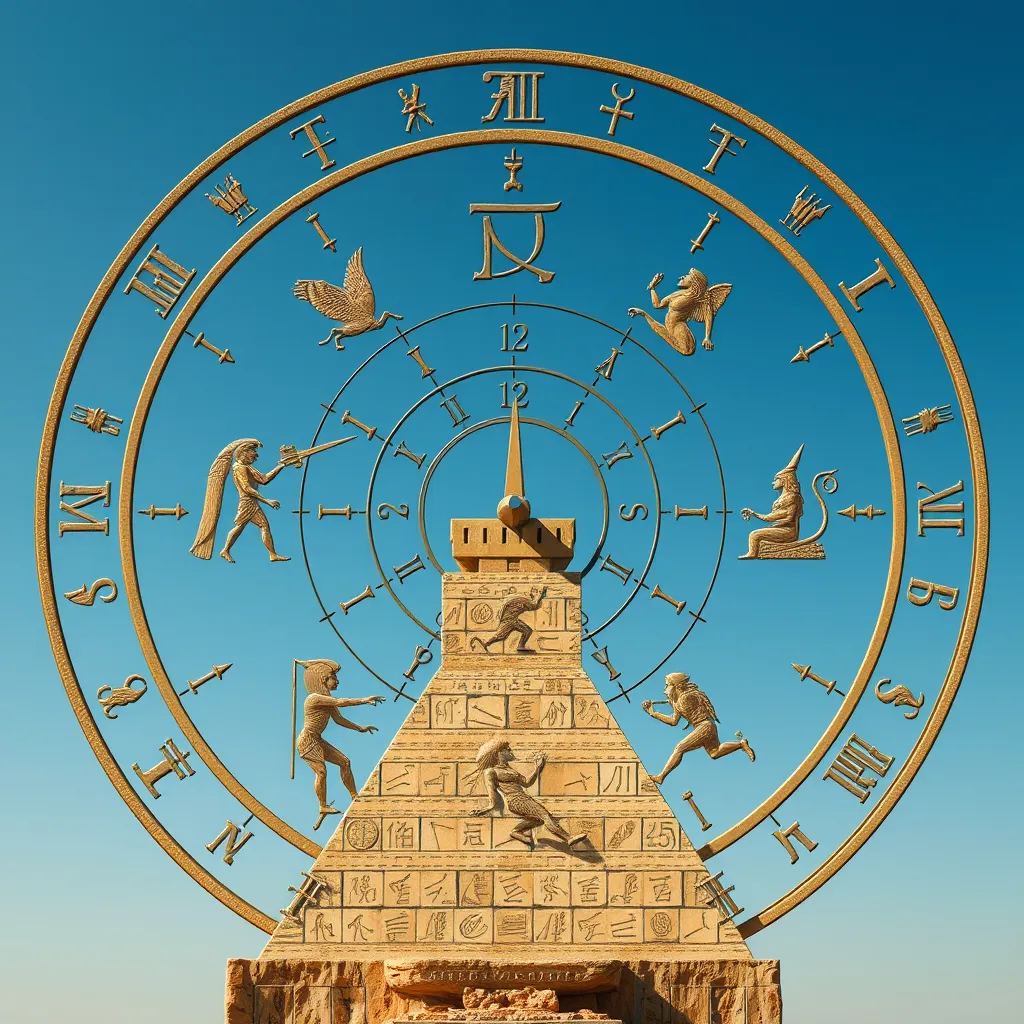The Egyptian Calendar: Symbolic Representations of Time and Seasons
I. Introduction
Calendars have always played a crucial role in the development of civilizations, serving as tools for organizing time, scheduling agricultural activities, and marking significant cultural and religious events. In ancient civilizations, the way time was measured often reflected the society’s relationship with nature, its religious beliefs, and its agricultural cycles. The Egyptian calendar is a remarkable example of this phenomenon, characterized by its unique structure and deep connections to the Nile River and the seasons.
II. Historical Context of the Egyptian Calendar
The origins of the Egyptian calendar can be traced back to the early dynastic period of ancient Egypt, around 3000 BCE. It was primarily influenced by the annual flooding of the Nile River, which was a critical event for agriculture in the region. The Egyptians developed their calendar as a way to predict and prepare for the inundation, which was vital for farming.
The calendar’s development was also marked by significant astronomical observations. Ancient Egyptians were keen astronomers, and they observed the stars, particularly the heliacal rising of Sirius, which heralded the start of the annual flood. This astronomical event was so significant that it formed the basis of their calendar system.
III. Structure of the Egyptian Calendar
The Egyptian calendar was primarily solar, consisting of 365 days divided into 12 months, each containing 30 days, plus an additional five days known as “epagomenal days.” This structure can be contrasted with lunar calendars, which are based on the phases of the moon. The solar aspect of the Egyptian calendar allowed for a more consistent agricultural cycle.
Overview of the 12 Months
- Thoth – 30 days
- Paopi – 30 days
- Hathor – 30 days
- Tehuti – 30 days
- Choiak – 30 days
- Tobi – 30 days
- Mesore – 30 days
- Phamenoth – 30 days
- Pharmuthi – 30 days
- Epiphi – 30 days
- Mesore – 30 days
- Payni – 30 days
The five extra days, known as the “Days of the Month of the Gods,” were considered to be outside the normal calendar, and they were often associated with the deities of ancient Egypt.
IV. The Role of Festivals and Religious Observances
The Egyptian calendar was closely intertwined with religious observances and festivals that marked significant agricultural and seasonal changes. These festivals were vital in maintaining the social and religious fabric of Egyptian society.
Some key festivals included:
- The Opet Festival: Celebrated to honor the god Amun, this festival involved a procession from Karnak to Luxor.
- The Wepet-Renpet (New Year): Marked the start of the agricultural year, coinciding with the inundation of the Nile.
- Harvest Festivals: Celebrated the end of the harvest season, giving thanks to the gods for their bounty.
These festivals not only served religious purposes but also strengthened community bonds and reaffirmed societal roles and hierarchies.
V. Symbolism of the Egyptian Months
Each month of the Egyptian calendar held symbolic associations tied to agricultural practices, deities, and natural phenomena. The months were not merely units of time; they were imbued with meaning that reflected the Egyptians’ worldview.
For example:
- Thoth: Named after the god of wisdom, this month was considered a time of planning and preparation.
- Hathor: Associated with love and fertility, it was a time for sowing seeds and celebrating life.
- Choiak: Linked to the god Osiris, this month was crucial for the harvest and the rebirth of the land.
This deep connection between the months and the natural cycles exemplified how the Egyptians integrated their understanding of nature into their cultural and religious practices.
VI. The Calendar’s Influence on Daily Life
The Egyptian calendar had a profound impact on daily life, particularly in agricultural practices. The timing of planting and harvesting was dictated by the calendar, aligning with the seasonal changes brought about by the Nile’s flooding and receding.
Key impacts included:
- Agricultural Planning: Farmers relied on the calendar to determine the best times to plant crops, ensuring maximum yield.
- Social Structure: The calendar dictated labor divisions and community events, influencing social hierarchies and roles.
- Economic Activities: Trade and market activities were often linked to festivals and harvests, impacting the economy significantly.
Overall, the calendar was not only a tool for timekeeping but also a fundamental aspect of Egyptian life, affecting everything from agriculture to social interactions.
VII. Comparison with Other Ancient Calendars
The Egyptian calendar shared certain similarities and differences with other ancient calendars, such as those of the Mesopotamians and the Mayans. While all these calendars were tied to agricultural cycles, their structures and underlying philosophies varied.
- Similarities:
- All calendars were linked to natural phenomena, particularly agricultural cycles.
- Religious observances and festivals played a crucial role in marking time.
- Differences:
- The Egyptian calendar was primarily solar, while the Mesopotamian calendar was lunisolar, incorporating both lunar and solar elements.
- The Mayan calendar was more complex, featuring multiple cycles and a sophisticated understanding of astronomy.
The Egyptian calendar also influenced later civilizations, particularly in the Mediterranean region, where its structure and festivals were adapted and integrated into subsequent cultures.
VIII. Conclusion
In summary, the Egyptian calendar was a vital tool for understanding ancient Egyptian culture, reflecting its agricultural practices, religious beliefs, and societal structures. It encapsulated the Egyptians’ relationship with their environment and provided a framework for organizing their lives.
The legacy of the Egyptian calendar endures today, reminding us of the intricate ways in which ancient peoples understood and represented time. Its influence can still be seen in contemporary calendars and the continued significance of seasonal changes in our agricultural and cultural practices.




